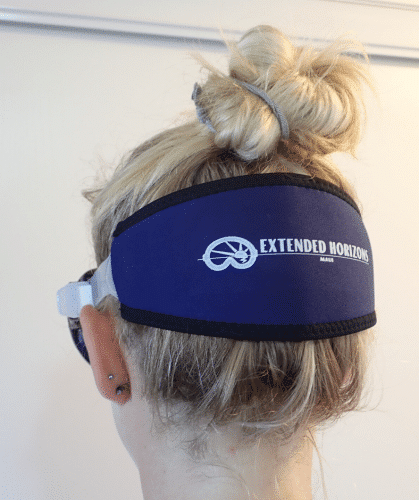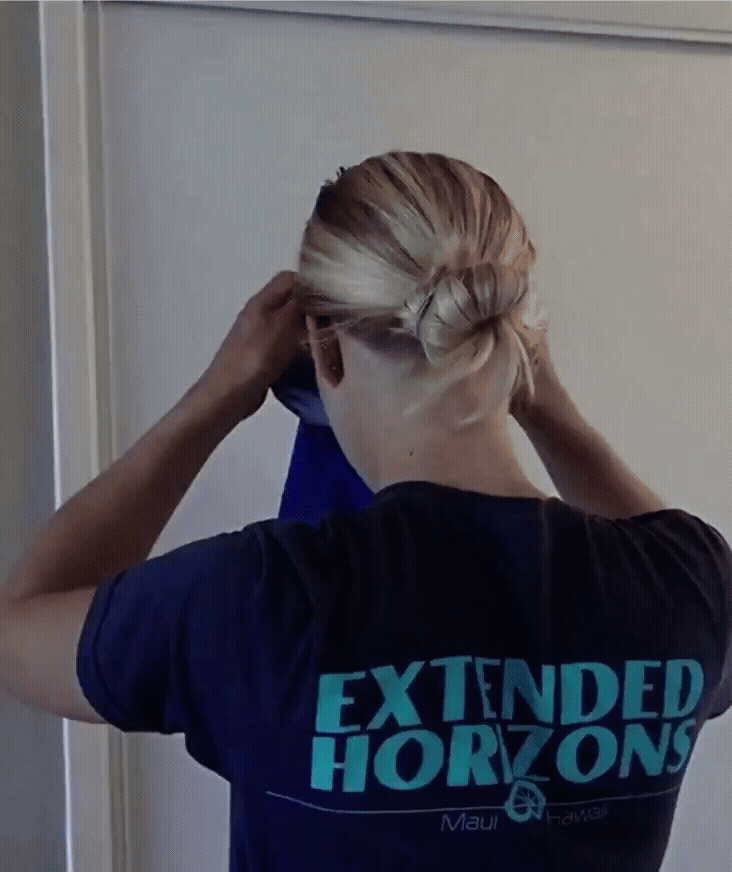By Annika Doerr and David Leonhardt
We all know what happens to our hair after diving right? …Medusa!
Luckily, here at Extended Horizons, we have A LOT of hair and have gathered a few tips over the years to help prevent hair damage associated with salt water diving. Spend more time blowing bubbles and less time combing out knots!
Follow these tips for mess-free, healthy hair:
Prepare Your Hair
Just before you go diving, wet your hair with fresh water. This way, your hair becomes soaked with fresh water which means it will absorb less salt water.
Applying an eco-friendly hair oil, such as coconut oil, can also help protect your locks. Coating your hair like this prevents salt from wicking moisture away from the inside of your strands. Essentially, coating your hair prevents moisture loss and reduces friction which leaves hair feeling much smoother, way less matted, and sticky. The rule of thumb when it comes to applying is: heavy on your ends and lighter towards your roots. This way, your dry, damaged ends get more attention than your oil-producing roots.
Also, don’t forget to go for a product that is eco-friendly, organic, fair-trade, and sustainably produced. Remember to research the companies you choose to buy from. By choosing environmentally-friendly products, you can help protect our reefs and sealife from obscure chemicals. Good for nature and good for you!
Use a Mask Strap Cover
Mask strap covers are great because they stop the silicone mask strap from pulling and tangling your hair.
With so many different colors and designs to chose from, you are sure to find something that suits your style as well! Just remove your mask strap, slide your the strap through the neoprene cover, reattach, and you’re good to go!
If you want to support your favorite Maui dive shop, stop by or give us a call to purchase a mask strap cover with the Extended Horizons logo!
Use Good Hair Ties
Seamless hair ties have changed our lives! Hair ties that are glued or clamped together often damage hair when the part that is glued/clamped starts to fray your hair. Not to mention, they also break and fall off. No wonder we see so many underwater!
So, go for something seamless and eco-friendly to protect your hair and the ocean.
Smart Hair Styles
Generally, any hair style works that is not tied in the area where your mask strap goes. Buns that are really high (towards the crown of your head) are easy and work well. A really low bun (towards the nape of your neck) are also a smart style. Tie it tight, as loose strands tend to get caught on your first stage…ouch!
Don’t forget braidy babes! Who said diving wasn’t sexy?! Fishtail, double braids, or french, they all add a touch of class. Braids are particularly great for longer hair and prevents it from knotting.
 Use a Buff to Contain Your Hair
Use a Buff to Contain Your Hair
Choose from a variety of cool hair buffs to keep your hair all in one place during a dive!
They are great for topside adventures and windy boat trip as well, protecting your hair from salt, sun, and wind.
Headbands are somewhat smaller and cover less hair but are generally tighter for more control. They work really well to keep shorter hairs (like fringes) out of your face.
Wear a Hood
Hoods are a great way to keep hair out of your way and all in one place, plus they add a bit of warmth! They come in all types for warm or cold water.
Don’t Forget Post-Dive Hair Care
Rinse the salt out of your hair with fresh water right after a dive. Don’t let salt water dry in your hair. As hair dries water starts to evaporate. As water evaporates salt is left behind in greater concentrations on your hair. This salty concentration is what sucks the moisture out of your hair and dehydrates it. This process is known as osmosis, which most of us still remember something about from high school. Whether you’ve been diving for 1 day or 2 weeks, once you’ve finished, remember to treat your hair with a good leave-in-conditioner or hair mask to give it that extra moisture boost!



 Use a Buff to Contain Your Hair
Use a Buff to Contain Your Hair